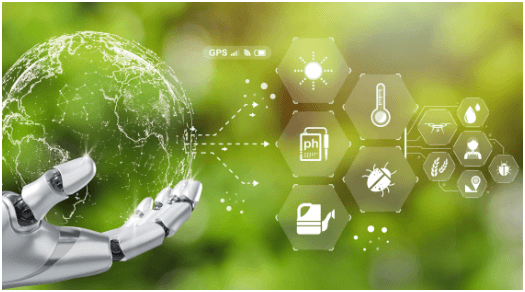Artificial intelligence, integration of AI into various industries is reshaping the way we work, offering unprecedented opportunities to boost productivity and streamline operations.
AI’s capabilities are transforming the business landscape by automating repetitive tasks, analyzing large datasets, and enabling more accurate decision-making. As a result, human workers are increasingly freed from mundane duties, allowing them to focus on more strategic, creative, and complex tasks that add greater value to their organizations. However, the rise of AI has not been without its drawbacks—chief among them is the significant environmental impact associated with AI’s energy consumption. The immense computational power required to develop, train, and deploy advanced AI models comes with a hefty energy cost, raising concerns about the technology’s carbon footprint and its implications for sustainability. This tension between AI’s productivity gains and its environmental costs is driving a push towards more energy-efficient solutions.
AI’s impact on productivity is substantial. By automating tasks that were once manual and time-consuming, AI technologies are streamlining workflows across various sectors. For example, in finance, AI-driven algorithms handle everything from fraud detection to portfolio management, performing analyses in seconds that would take human analysts much longer. In customer service, chatbots equipped with natural language processing can handle routine inquiries, freeing human agents to address more complex concerns. Similarly, in manufacturing, AI-powered systems are used to monitor equipment, predict maintenance needs, and optimize production lines, resulting in reduced downtime and more efficient operations. These applications save time, reduce errors, and allow businesses to allocate human resources to higher-order functions, such as strategy development and innovation.
One of the most transformative benefits of Artificial intelligence is its ability to analyze data at scale. With access to massive amounts of information, Artificial intelligence can identify trends, make predictions, and offer insights that guide strategic decision-making. This capability is invaluable in industries like healthcare, where AI tools are used to detect diseases in medical images with accuracy that rivals, or even surpasses, human doctors. In marketing, AI analyzes consumer behavior to personalize advertising and improve customer engagement, leading to better outcomes and a more targeted approach. Artificial intelligence -driven predictive analytics also play a crucial role in logistics, forecasting demand, and optimizing supply chains, which helps businesses stay ahead in competitive markets. In short, AI enables organizations to operate more efficiently, make smarter decisions, and remain agile in the face of rapid change.
However, the widespread adoption of Artificial intelligence comes with significant environmental considerations. Artificial intelligence systems, particularly those involving machine learning and deep learning, require extensive computational power. Training large AI models demands vast quantities of data and involves millions, or even billions, of calculations, consuming a considerable amount of electricity. Data centers that support AI operations run continuously, often relying on traditional power grids, which contribute to greenhouse gas emissions. This energy consumption raises questions about the sustainability of AI, especially as demand for AI-driven solutions continues to grow.
The environmental cost of Artificial intelligence has prompted industry leaders and researchers to seek more sustainable approaches to AI development. Reducing AI’s carbon footprint involves a multifaceted effort, from improving the efficiency of Artificial intelligence models to adopting cleaner energy sources. One major area of innovation is the development of more efficient algorithms. Researchers are exploring ways to make AI models smaller and faster without compromising performance. Techniques such as model compression, which involves simplifying complex models, and pruning, which removes redundant parameters, can reduce the computational power required for AI tasks. Another promising strategy is the use of quantization, which lowers the precision of certain calculations, thereby saving energy during the training and inference stages.
In addition to refining algorithms, the hardware that powers Artificial intelligence is also evolving to meet the challenge of sustainability. Traditional data centers, which often rely on central processing units (CPUs), are gradually being supplemented or replaced by specialized hardware designed specifically for AI workloads. Graphics processing units (GPUs), which can handle parallel processing tasks more efficiently, are widely used for AI applications, offering better performance per watt. Even more specialized are AI accelerators like Google’s Tensor Processing Units (TPUs) and other custom chips, which are engineered to execute AI computations with lower power requirements. These advances in hardware are helping to reduce the energy footprint of AI systems, making them more environmentally friendly.
Stay informed with the latest updates – click here .

